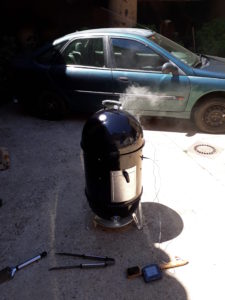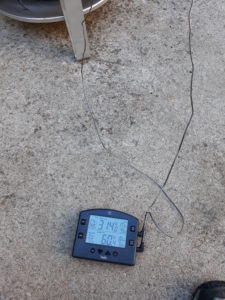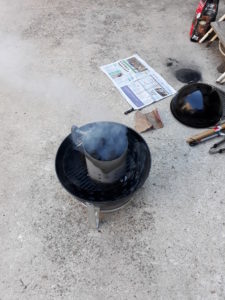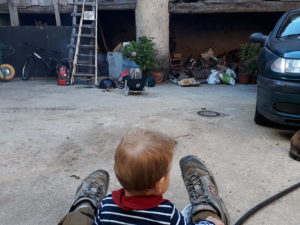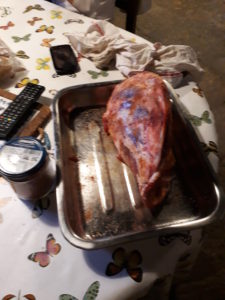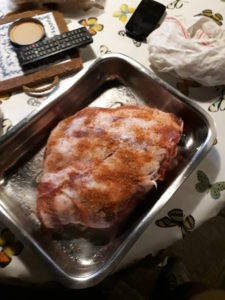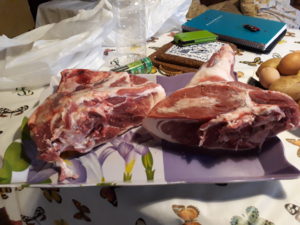It was 11AM when I finally put this piece, the pork butt, on the top grate of my smoker. Instead of stalling at 150ºF, it stalled at 160ºF, it was stuck there for hours, in fact I even saw the temp drop a bit. I was warned about this – the Stall is when evaporation counteracts the heat rise. But it wasn’t just that. I’m a pioneer in Iberian pork smoking, or at least I believe I am, and this pork butt was «cebo de campo» – the piggy ran loose in the field, making the meat tougher but tastier. I believe that’s what made it take so long.
Eran las 11:00 cuando finalmente eché esta pieza, la parte alta de la paleta en la rejilla de arriba de mi ahumador. En vez de estancar a los 65ºC como me adviertían, se estancó a los 71ºC y en esa temperatura se quedó horas – hasta vi la temperatura bajar un poquito. Eso ocurre porque la evaporación de agua en el superfice actúa en contra de la subida de temperatura. Pero no fue solo eso. Soy pionero en ahumar carne de cerdo iberíco, o por lo menos creo que lo soy, y esta paleta era de cebo de campo, haciendo la carne más dura pero más jugosa. Creo que fue por eso que tardó tanto.
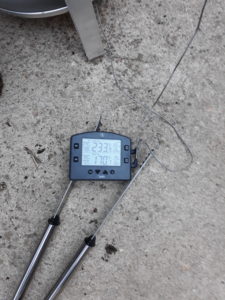
As you can see in the photo, at 9PM I gave up and took the meat off the grill – dinner was set for 9:30, which is totally reasonable for Spain in summertime, but each degree (ºF) of temp rise was taking ten or more minutes. I only got to 170ºF, and I was worried that my pork would be tough. You can also see the air temp on top, 233ºF is right in the middle of the smoking happy zone of 225 to 250ºF. Stay tuned for the next blog to see how it turned out!
Como se ve en la foto, a las 09:00 tiré la toalla y saqué la carne de las brasas – ibamos a cenar a las 09:30. Se tardaba más de diez minutos en subir cada medio grado celsius. Solo llegó a 77ºC y yo temía que la carne sería dura. Arriba se ve la temperatura del aire, lo mantuve justo en el medio de la zona perfecta para ahumar, que va de 105ºC a 120ºC. ¡No pierdas la proxima entrada para saber qué tal salió!

